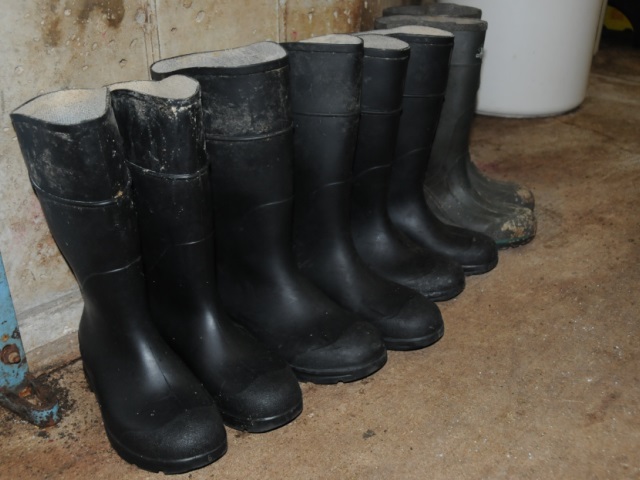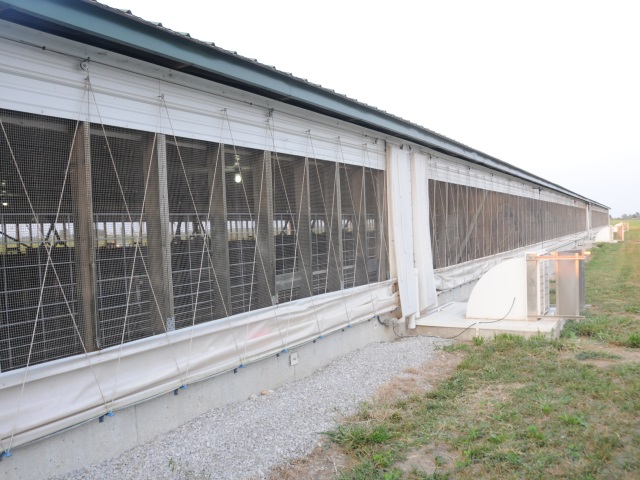When you have hundreds or even thousands of pigs living together under one roof, biosecurity is a serious matter. Not only are you protecting your livestock, but your investment as well. Every facility is unique but all facilities can benefit from proper maintenance, common sense and adopting a few biosecurity precautionary measures. While it is impossible to completely keep disease out of a hog herd, there are things you can do to reduce the spread of harmful pathogens and protect the health of your pigs.
Signs, signs, everywhere a sign
Biosecurity signs are step one in bringing biosecurity awareness to both employees and the public. These signs should be placed at the end of driveways or in the parking area and at the entrance of all hog barns. Signage is important for two reasons, it deters trespassers and it allows you to control who enters what area, which reduces the risk of outside contamination. Signs stating it is a secure area coupled with directions to an office or some kind of contact information will help keep you in control while still maintaining transparency within your operation.
 |
| 1 of 3 premium hog sites UNDER 10 years old!! 4,960 spaces with professional dedicated maintenance Sites sold as a group or individually Download sales brochure now! PorkMatters.com |
Visitors
Transparency within your operation is more important than ever with growing consumer concern and the many misconceptions surrounding agricultural practices, however, visitors create an increased risk of problems due to outside contaminants. If you do invite visitors into your barns, it is important to know where your visitors have been prior to their visit, what kinds of other animals they have been around and they should always put on fresh cloths and boots before entering a bar
Ideally, you’d want to provide extra coveralls and disposable boot/shoe covers to ensure your visitors aren’t carrying in unwanted pathogens. Additionally, compulsory showering in and out of barns adds to barn biosecurity, increases biosecurity attitudes regarding biosecurity and can deter some visitors, which further reduces risk. Visitors should also sign a visitor’s book and it’s not a bad idea to add a clause stating that by signing the visitor’s book they have not been to any other hog barns, slaughterhouses, or other possibly contaminated facilities within a set number of hours. The waiting period is variable and depends on the type of facility the visitor(s) visited. According to a report released by the University of Nebraska, they suggest anywhere from 12 to 72 hours with the most common duration being 24 to 48 hours.
Pest and weed control
Pest and weed control is important for the health of the herd and for general maintenance of the barn. Keeping bate boxes around the exterior of the barn along with keeping the exterior properly maintained will reduce rodents and other pests from getting into the barn.
Washing barns
Johnna S. Seaman and Thomas J. Fangman with the Department of Veterinary Medicine, University of Missouri Extension, describe general biosecurity measures as the following:
- Clean all rooms thoroughly with a high-pressure washer and disinfect with a broad-spectrum product.
- Workers must always wear clean clothing and boots to the site. Advise workers not to return to higher health status rooms after being in contact with a lower health status room without proper cleaning and sanitation of clothing and boots.
- Vehicles should not enter the premises unless they are cleaned and disinfected.
- Place dead animals outside the premises for removal by rendering trucks.
- Locate load-out facilities at the perimeter of the premises.
- Minimize the number of visitors, and require them to wear clean clothing and boots.
- Install a perimeter fence around the premises to keep out unwanted visits from people, pets and feral animals.
Biosecurity is a vital part of keeping a herd healthy and protecting your investment. A few simple changes and rules can mean the difference between a clean group of healthy market-weight hogs ready for shipment and months of backbreaking work trying to fight some pathogen that snuck its way into your barn. Given, you can’t create a disease-free environment but you can make sure you and your workers are doing everything they can to keep those pigs healthy. After all, those pigs are the core of your operation and healthy pigs are a far better investment than sick ones.
Editor's Note: This article by Jo Windmann was originally published September 8, 2015, on Farm Journal's Pork.
.JPG)



betmatik
ReplyDeletekralbet
betpark
tipobet
slot siteleri
kibris bahis siteleri
poker siteleri
bonus veren siteler
mobil ödeme bahis
BGVVPG